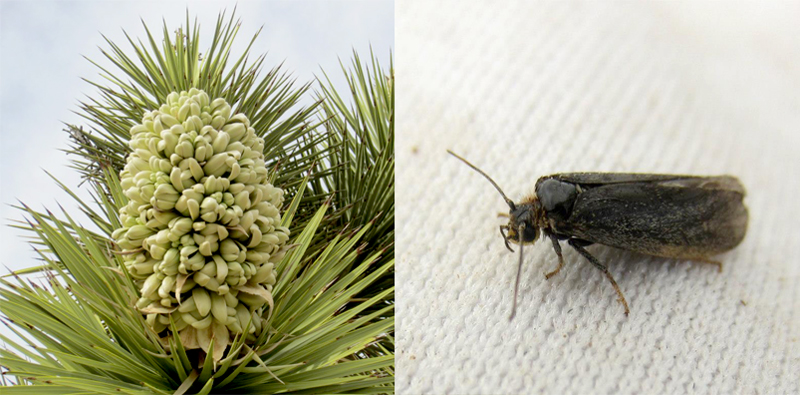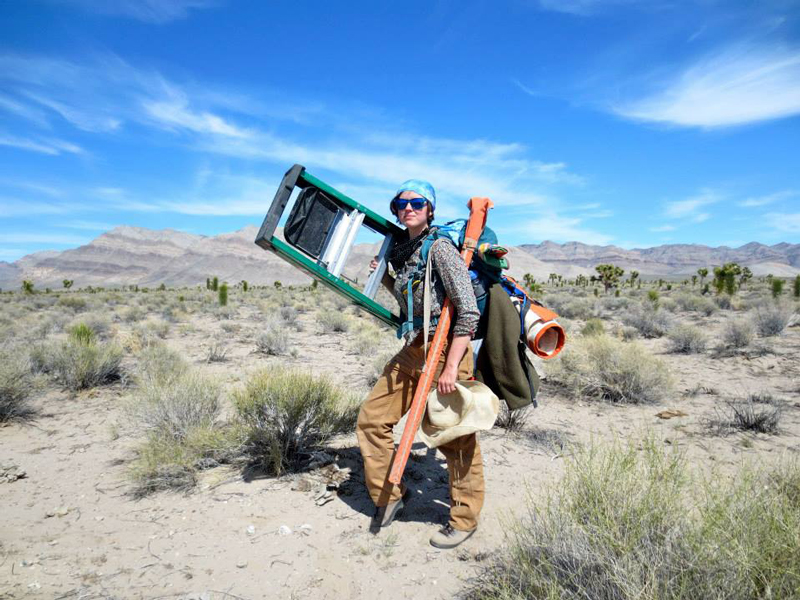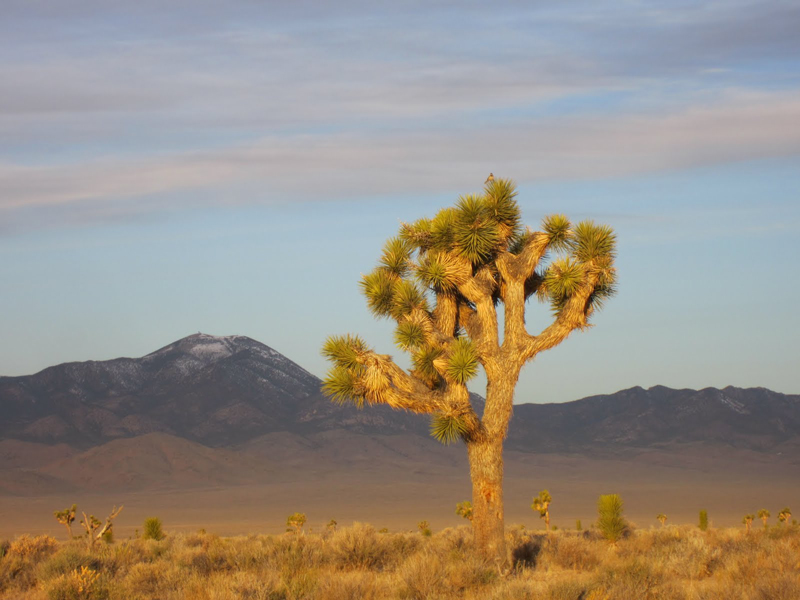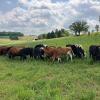Tikaboo Valley, Nevada. Home of the Extraterrestrial Highway, the infamous black mailbox, UFO seekers, cattle ranchers, and desert wanderers. Nestled between three mountain ranges and notorious Area 51, Tikaboo is also home to those bizarre Mojave residents known as Joshua trees. These spiky, Dr. Seuss-like plants provide critical food, moisture, and refuge to an incredible diversity of desert creatures, from the industrious packrat to the lumbering yucca weevil. And—perhaps most famously in the ecology world—they are the sole host plants for two species of yucca moths, which lay their eggs in Joshua tree flowers and nowhere else. The Joshua trees, in turn, completely rely on these yucca moths for pollination. Theirs is a classic case of obligate mutualism.

Joshua trees occur across large swaths of California, Arizona, and Nevada, but part of what makes Tikaboo so special is that it is the only place we know of where the two species of Joshua trees, the eastern Joshua tree (Yucca jaegeriana) and the western Joshua tree (Y. brevifolia), overlap, which means it is also the only place we know of where their two sister species of moth pollinators (Tegeticula antithetica and T. synthetica) coexist. The two moth species look almost exactly the same, but differ slightly yet significantly in body size and in the length of their ovipositors (egg-laying organs). In fact, the shape and length of the flower styles of each Joshua tree species perfectly match the differences in the body length and ovipositor sizes of the two moth species. Pure coincidence? Or is some other force, like natural selection, at play?
This question is one that evolutionary ecologist Dr. Chris Smith has been trying to answer for the better part of a decade, and Tikaboo Valley makes the perfect outdoor laboratory. I first met Chris when he hired me as a seasonal field technician six years ago. His project and the field site were so intriguing that I have gone back every year since, helping the Smith Lab conduct field research to better understand the role of coevolution between Joshua trees and their moth pollinators. While new experiments and research questions pop up every year, most of my involvement with the project has revolved around data collection for a long term reciprocal transplant experiment, which aims to determine how ovipositor length and flower style length impact the fitness of both moths and Joshua trees. Luckily for me, this means a lot of time in the field.

Living and working in the startling extremes that are the Mojave Desert in early spring (including everything from 100° F heat waves to epic snow and sandstorms) gives one an entirely new appreciation for the plants and animals that survive in this landscape. Most of our days involve traipsing around the desert with ladders, collection vials, wire cages, and sticky traps. We scour the valley for Joshua tree flowers and yucca moths, record tree morphology data, and collect leaf and flower samples as well as live moths. We set up special cages on the blooms to conduct our reciprocal transplant experiments, install sticky cards to monitor moth visitors, and even collect floral scents to determine if the moths respond differently to the scent of each Joshua tree species. The moths we collect are sexed, measured, identified to species, and released into specific cages—some are released onto their “correct” host species, others are released onto the “wrong” host species, and still others are released onto trees that physically appear to be hybrids of the two. These cages will be revisited in May for fruit collection to determine which combinations led to successful fruiting and caterpillar emergence. At the end of each field season, which can last anywhere from five days to six or seven weeks, Chris and his lab take all of the samples and data back to Willamette University in Salem, Oregon, analyze what we found, and add a little more to the growing body of knowledge surrounding this amazing group of plants and animals.
So what have we learned? Is pollinator-mediated selection maintaining differences between the two Joshua tree species? Data analysis is ongoing, but the Smith Lab is beginning to uncover some pretty interesting things. First of all, it appears that natural selection is acting to make moth ovipositors and flower styles match in length. And while style length is certainly one of the traits under selection, it is not the only one. Intriguingly, natural selection appears to be maintaining species separation even where the two Joshua tree species overlap and hybridize. But what specific traits are responsible for sustaining this divergence?

The research continues. In the meantime, the Smith Lab has launched an ambitious program to map the entire Joshua tree genome. You can read more about that project here.



